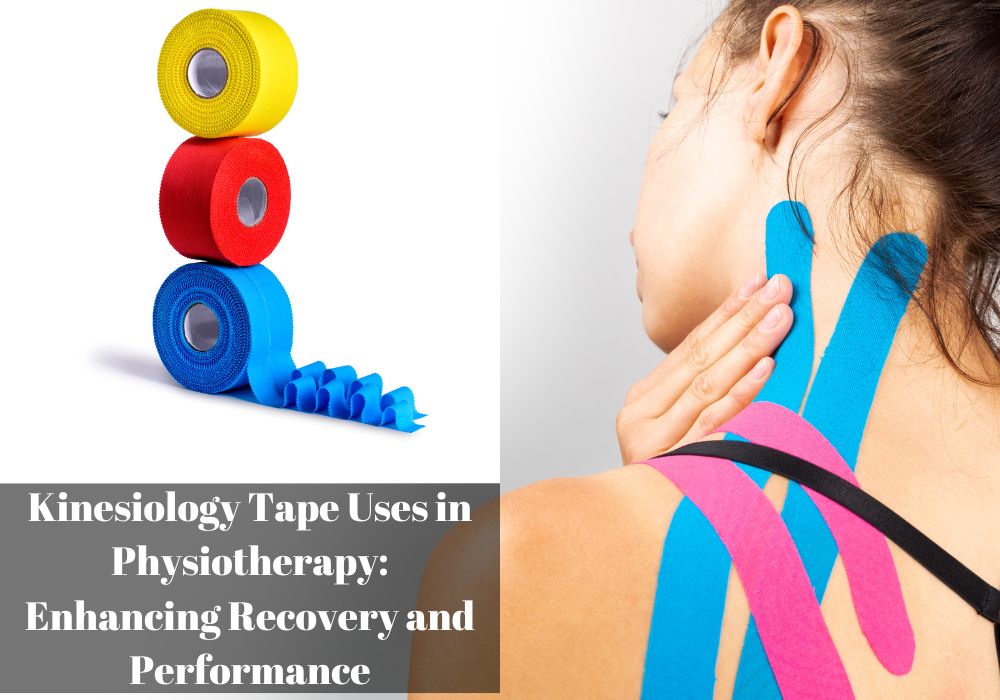Introduction
In the world of physiotherapy, the use of kinesiology tape has emerged as a revolutionary technique to aid recovery, manage pain, and enhance overall performance. This flexible and adhesive tape, originally developed by Japanese chiropractor Dr. Kenzo Kase in the 1970s, has gained immense popularity due to its versatility and effectiveness. In this comprehensive guide, we'll explore the wide array of kinesiology tape uses in physiotherapy and delve into its applications for various conditions and scenarios.
Kinesiology Tape Uses in Physiotherapy: A Multifaceted Approach (Buy Now)
Kinesiology tape, often referred to as "k-tape," is revered for its ability to provide support to muscles and joints without restricting movement. Its unique elasticity mimics the human skin's elasticity, making it an ideal tool in physiotherapy. Here are some key areas where kinesiology tape finds its invaluable application:
Supporting Muscles and Joints
The primary purpose of kinesiology tape is to offer support to muscles and joints without inhibiting the body's natural range of motion. Its elastic nature lifts the skin slightly, creating space for better blood circulation and reducing pressure on sensitive areas. This proves immensely beneficial in conditions like muscle strains, ligament injuries, and joint instability.
Pain Management and Inflammation
K-tape's application technique involves manipulating the tension in the tape to provide localized pressure, which can help manage pain and reduce inflammation. The tape's micro-lifting effect aids in reducing pressure on pain receptors, offering relief to individuals suffering from chronic pain conditions such as arthritis or overuse injuries.
Postural Correction
Physiotherapists often employ kinesiology tape to facilitate postural correction. By strategically applying the tape to muscles that play a role in maintaining proper alignment, therapists can encourage patients to adopt healthier postures. This is particularly helpful for individuals who spend prolonged hours sitting or standing.
Lymphatic Drainage Enhancement
Kinesiology tape's lifting action also influences the lymphatic system, promoting efficient drainage of lymphatic fluid. This can be particularly useful for managing edema, reducing swelling, and accelerating recovery after soft tissue injuries.
Performance Optimization in Athletes
Beyond rehabilitation, kinesiology tape is increasingly recognized for its role in enhancing athletic performance. When applied to specific muscle groups, the tape can offer support and proprioceptive feedback, aiding athletes in maintaining optimal form during training and competition.
Neurological Facilitation
K-tape's influence isn't limited to the musculoskeletal system; it can also impact the nervous system. By strategically taping certain areas, therapists can stimulate or inhibit specific muscle groups, aiding in motor control retraining after neurological injuries.
Pregnancy Support
Expectant mothers can benefit from kinesiology tape as well. Its gentle support can alleviate discomfort associated with the changing body's weight distribution during pregnancy. Additionally, it can offer relief from common pregnancy-related pains.
Scar Management
K-tape's properties extend to scar management as well. When applied over healing scars, the tape can soften and flatten the scar tissue, potentially reducing pain and improving the scar's appearance over time.
Frequently Asked Questions (FAQs)
How long can kinesiology tape be worn?
Kinesiology tape is designed to be worn for several days, typically 3 to 5 days, depending on factors such as skin type, activity level, and application technique.
Can kinesiology tape get wet?
Yes, most k-tapes are water-resistant, allowing individuals to shower, swim, and engage in water-based activities without compromising the tape's effectiveness.
Is kinesiology tape safe for sensitive skin?
Yes, there are hypoallergenic kinesiology tapes available specifically designed for individuals with sensitive skin. It's recommended to do a patch test before applying the tape extensively.
Can I apply kinesiology tape myself?
While self-application is possible, it's advisable to consult a qualified physiotherapist for proper tape placement, tension adjustment, and optimal results.
Are there any restrictions on movement while wearing kinesiology tape?
No, kinesiology tape is designed to facilitate movement. It offers support without limiting the range of motion, making it suitable for various activities.
Can kinesiology tape replace traditional medical treatments?
Kinesiology tape is a complementary technique and should not replace conventional medical treatments. It's best used in conjunction with physiotherapy and medical advice.
Conclusion
Kinesiology tape has revolutionized the field of physiotherapy with its remarkable versatility and effectiveness. From supporting muscles and joints to enhancing athletic performance and managing pain, its applications are far-reaching and diverse. As you embark on your journey to recovery and improved well-being, consider the myriad benefits that kinesiology tape can offer. To make the most of this innovative technique, consult a qualified physiotherapist who can guide you through its proper application and ensure optimal results.

